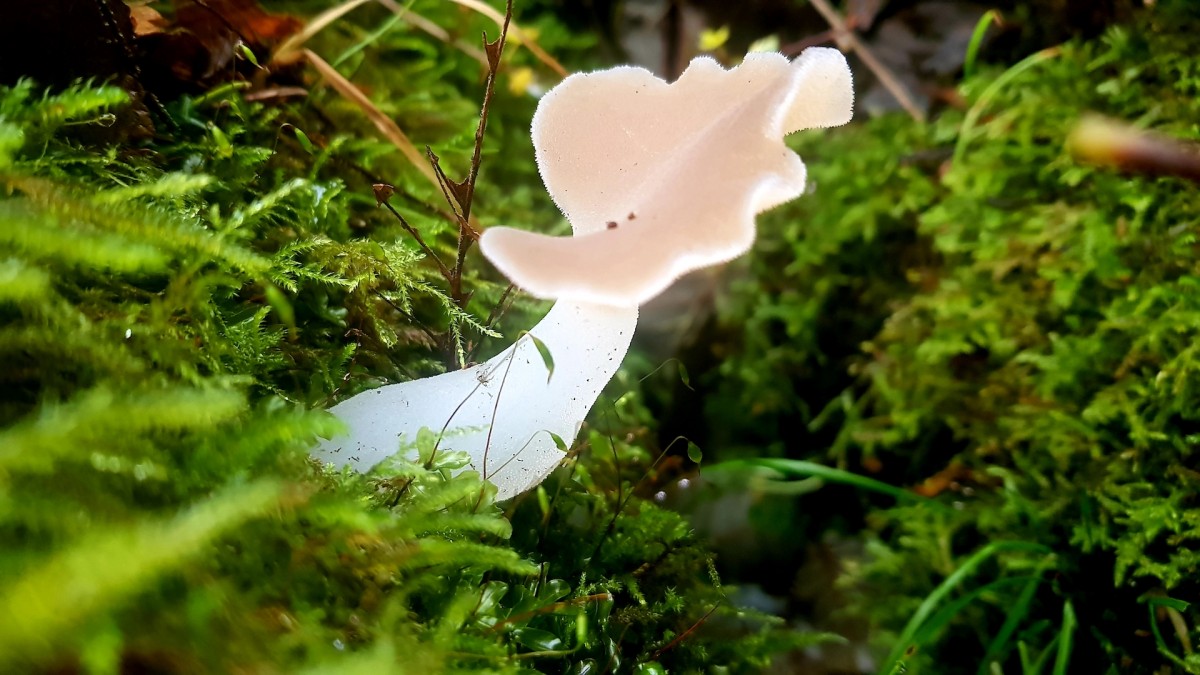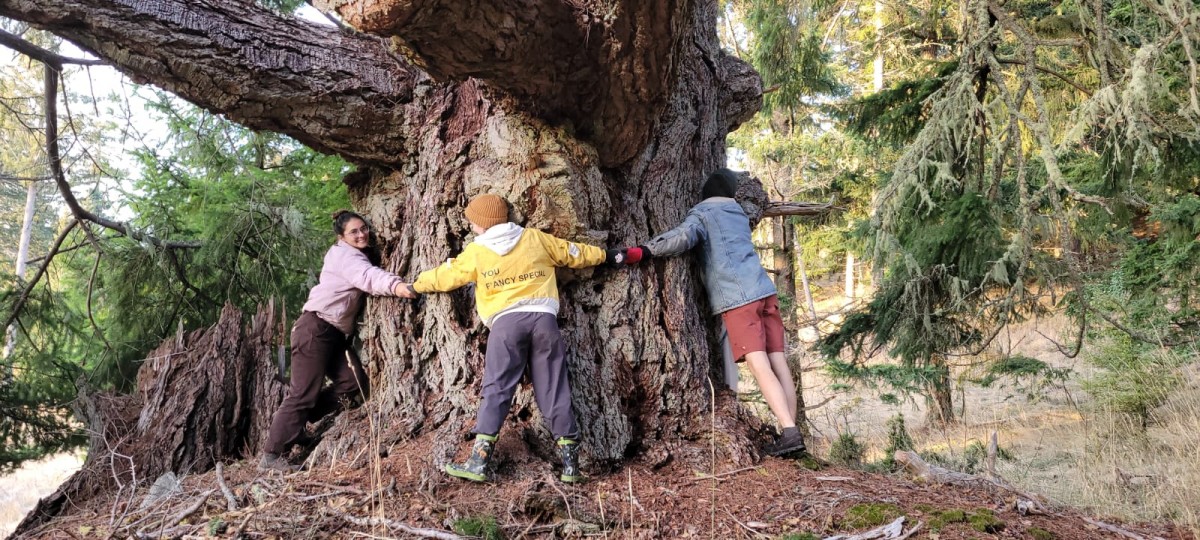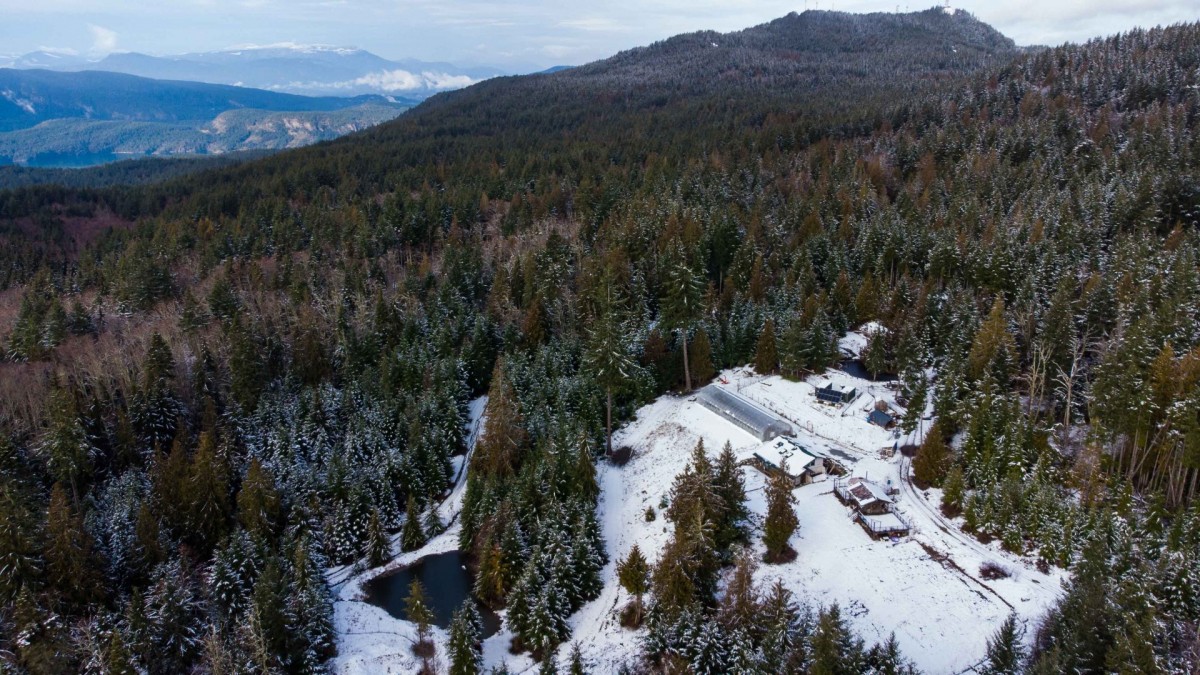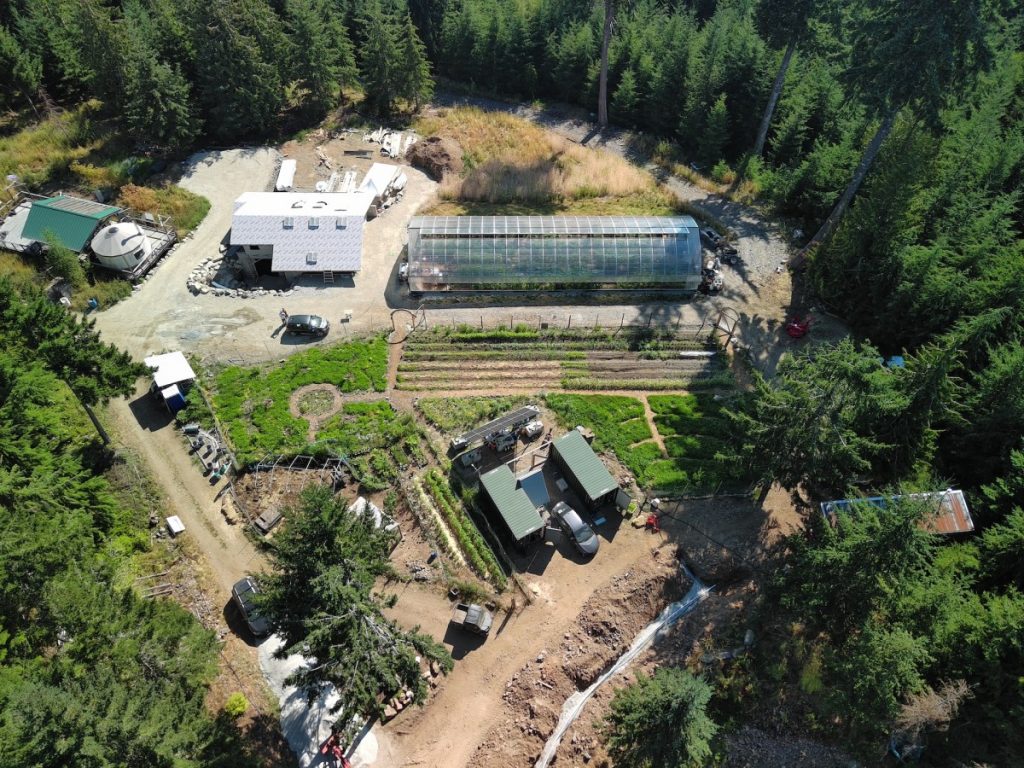The land we live on and the history of it's inhabitants.

Forest Gardens is located on the ancestral and unceded traditional territory of the Hul’qumi’num and SENĆOŦEN speaking peoples.
We are committed to supporting reconciliation and decolonization through our work with the land and community.

The world is in a profound state of upheaval.
And while the causes of our turmoil are dizzyingly complex and overwhelming,
the solutions are elegantly simple, and all around us.

We wish to be in service to life through this great transition.
We are called to help build the foundation for resilient local communities that are based on ecologically regenerative food systems.
We are guided by the knowledge of our pre-industrial ancestors, the wisdom of our Indigenous elders, and the practices of modern agro-ecological land stewards.
We are developing a regenerative farm to help life thrive into the future.

Forest Gardens is located on Salt Spring Island, off the coast of British Columbia.
The land is part of the “coastal Western Hemlock bio-geo-climatic zone”, if you want to sound technical.
It’s more commonly known as a temperate coastal rainforest because of the cool summers and mild, wet winters.
This rainforest is home to a huge amount of life.

The forest canopy has some very large trees in it, such as Western Hemlock, Douglas Fir, Grand Fir, Western Red Cedar, White Pine and Red Alder.
Stinging nettles, foxglove, daisies, thistles, oceanspray, mullen, salal, oregon grape, various mosses, lichens, ferns and lots of grasses fill in the understory.
Many species of fungi, insects, reptiles, amphibians, birds and mammals live amongst all these plants.

The land is nestled in a large plateau near the top of Mt Tuam.
Selective logging in 2000 left a mix of young and mature forest, with small fields and rocky bluffs breaking up the gently sloping ground.
Several streams wind across the land connecting a series of wetlands together.
We exist in relationship with the land and all of the beings that we share this home with.
As our connections deepen, and we begin to understand ourselves as part of the web of creation, our capacity to support life increases, and our role as stewards becomes clear.

We are a small group of humans learning how to live together in ways that respect the sovereignty, interconnection and wisdom of the lands and beings that we coexist with.
We try really hard not to take ourselves too seriously.
Taking a walk in the forest and reminding ourselves that we are but a small part of the Universe’s grand experiment to know itself both seem to help.
Regeneration
After a disturbance, life tries to expand in diversity, complexity and creativity.
Learning how to support the patterns of regeneration offers us powerful tools for interacting with the world in positive ways.
As stewards of life on earth, our role is to provide for our needs in ways that support the regeneration of the biosphere.
Resilience
We cultivate resilience in our selves through practices of mindfulness, gratitude and compassion.
We cultivate resilience in our community by helping to grow healthy & abundant local food systems.
We cultivate resilience in the biosphere by nurturing the health and diversity of the soils, waters, air and living beings.
Relocalization
Strengthening the web of local connections we are part of is key to thriving in this future.
Investing in our surrounding communities, economies and ecosystems builds local resilience.
Growing vibrant and abundant local food systems nourishes a relocalized future.
Permaculture Design
Permaculture is an ethical and practical framework for integrating humanity into the biosphere, in ways that meet our needs through regenerating nature.Based on observation and emulation of natural patterns and ecological systems, Permaculture integrates the physical, temporal and social elements of life into a synergistic relationship between humans and our environment.
By consciously designing our settlements to have the diversity, stability and resilience of natural ecosystems, Permaculture offers us the tools to live a healthy life that supports future generations and the planet.
Agroforestry
Agroforestry is an agro-ecological system that integrates trees, crops, and livestock together into healthy and productive ways.Through practices such as alley cropping, silvopasture, windbreaks, and forest farming, agroforestry mimics natural ecosystems to grow food.
Main benefits include enhanced soil health, increased biodiversity, carbon sequestration, stabilized water cycling, and diverse yields and income streams for farmers.
The Soil Food Web
“Despite all our accomplishments, we owe our existence to a six-inch layer of topsoil and the fact that it rains." ~ Paul HarveyWe believe the key to growing healthy plants is building healthy, living soil.
Compost, cover crops, compost tea, biochar, no till cultivation, mulch and vermicompost are the best ways we have found to build soil.
Healthy soil is foundational to the regeneration of ecosystems, and the resilience and abundance of our communities.
Soil Amendments
We make and sell vermicompost, compost tea and biochar through our business, Salt Spring Soil.
Fresh Produce
We sell a variety of vegetables, perennial plants and herbs through an online local marketplace
We are inviting skilled, passionate and dedicated humans to apply to join the Core Team for the 2025 growing and learning season.
To help us keep growing, we need your help designing, developing and managing all aspects of the farm over the season.
We currently have about 7,500 square feet of annual growing beds planted with a wide range of vegetables and supporting plants that feed both the farm team and local community.
We are in the process of converting 20 acres of previously logged forest into a mosaic of Food Forests, fields & gardens filled with thousands of multi-functional perennial plants.
Farm Manager responsibilities include:
- Designing and installing irrigation systems
- Designing and creating new growing areas
- Vegetable propagation, planting, tending, harvesting & sales
- Perennial nursery care and sales
- Designing and planting perennial plant systems
Details of the position:
- Season runs from April 1st to October 31st, 2025
- Income share from farm sales
- Training in the theory and application of all aspects of farm operations & development
- Room and board included
- Free participation in 2025 Permaculture Design Certificate Course
What we are looking for from you:
- Have a minimum of 1 season practical experience in relevant aspects of regenerative agriculture
- Are available from April 1 – October 31, 2025
- Are able to lift 40 lbs comfortably
- Are excited to work a farming schedule (early mornings, evenings & weekends are sometimes necessary)
- Are stoked to live a rugged wilderness homesteading lifestyle and get your hands dirty creating regenerative food systems
Healthy soil is the foundation for healthy plants, and healthy plants are essential for healthy humans and ecosystems.
Soil building is an integral aspect of Forest Gardens and our farm development and operations. So much so that we have an entire position dedicated to soil building.
Soil Builder responsibilities include:
- Building and applying actively aerated and static compost piles
- Brewing and applying compost teas
- Feeding and harvesting the vermicompost bins
- Making and applying biochar
- Managing sales of vermicompost, compost teas and biochar
- Mulching perennials
Details of the position:
- Season runs from April 1st to October 31st, 2025
- Income share from farm sales
- Training in the theory and application of all aspects of soil building systems, with a focus on The Soil Food Web methodology
- Room and board included
- Free participation in 2025 Permaculture Design Certificate Course
What we are looking for from you:
- Have a minimum of 1 season practical experience in relevant aspects of soil building
- Are available from April 1 – October 31, 2025
- Are able to lift 40 lbs comfortably
- Are excited to work a farming schedule (early mornings, evenings & weekends are sometimes necessary)
- Are stoked to live a rugged wilderness homesteading lifestyle and get your hands dirty creating regenerative food systems
Food is at the center of our lives, and a vibrant kitchen full of well fed humans improves all aspects of the farm.
We are looking for a magical human with a passion for cooking, great organization skills, and a flair for experimentation and creativity to help the kitchen thrive.
This position will be responsible for managing the kitchen, planning and cooking several group meals per week and coordinating the kitchen schedule and maintenance.
We serve a primarily vegetarian diet, and usually have several food sensitivities that need to be taken into consideration (gluten, dairy & sugar) so adaptive cooking skills are a must.
Wildcrafting, food preservation and helping in the gardens are additional tasks that can be explored as interest and time permits.
Details of the position:
- Season runs from April 1st to October 31st, 2025
- Income share from farm sales
- Room and board included
- Free participation in 2025 Permaculture Design Certificate Course
What we are looking for from you:
- Have a minimum of 1 year practical experience in kitchens
- Are available from April 1 – October 31, 2025
- Are able to lift 40 lbs comfortably
- Are excited to work a farming schedule (early mornings, evenings & weekends are sometimes necessary)
- Are stoked to live a rugged wilderness homesteading lifestyle and get your hands dirty creating regenerative food systems